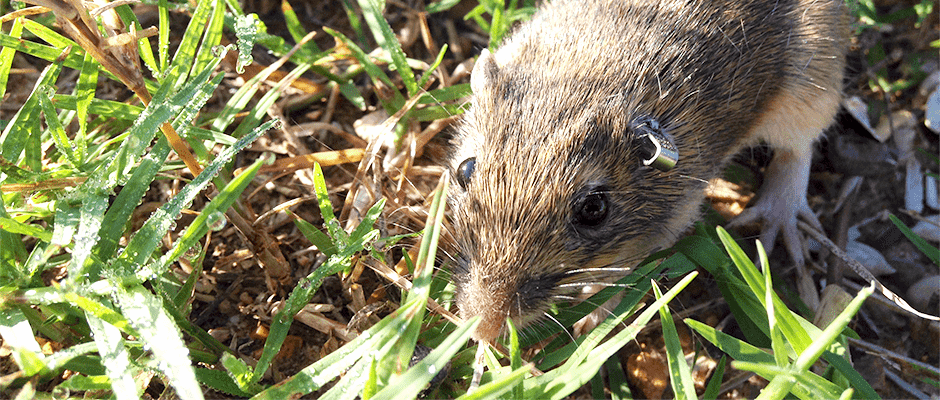Share this article
Tiny but tough: Fire ants reduce rodent numbers, ticks
Red imported fire ants are known to cause destruction in species such as the federally endangered Attwater’s prairie-chicken (Tympanuchus cupido attwateri) in Texas. They interfere with the chickens’ eggs and make nesting difficult.
But in a recent study published in the journal Royal Society Biological Letters, researchers looked at whether the ants could also benefit wildlife species.
“Upon moving to Texas and trying to collect and trap mammals for field work, I found out that ants are a big issue here,” said Jessica Light, who is originally from Michigan. Light is an associate professor in the Department of Wildlife, Fisheries and Sciences at Texas A&M University and one of the authors of the study. The ants — native to South America — typically feed on small mammals, insects and worms, and the researchers were curious to know how that impacted small mammal populations and their host ticks in Texas’s prairie habitats.
As part of the study, the researchers set up a field experiment that involved two geographic sites in two different counties. One site had two treatment plots where the ants were experimentally suppressed because the area was also being managed for Attwater’s prairie chickens. The other site contained two plots where the ants were not suppressed. The researchers placed 60 small mammal traps in each plot.
For two days each month over approximately one year, the team checked the traps for small mammals. When they caught one, they recorded the species, took samples for pathogen testing and collected ticks. The team tagged and released the animals so they would know if they trapped the same animal again. They then sent the tick samples as well as ear biopsies from the rodents back to the lab to test for tick-borne pathogens.
The most common species the researchers caught was the hispid cotton rat (Sigmodon hispidus), but they also caught other species such as the northern pygmy mouse (Baiomys taylori) and the fulvous harvest mouse (Reithrodontomys fulvescens).
After completing their field work, the researchers found they caught more small mammals on the treatment plots where the ants were being chemically restricted than on the control plots. Further, the team found that in addition to more mammals on the treatment plots, there were about three times as many ticks on those same plots compared to the control plots. However, after assessing the pathogens, the team didn’t find a large difference between the control and treatment plots.
Still, according to Light, the ants could possibly affect tick-borne pathogens. “Ants could be breaking up the life cycle of how pathogens are transmitted, and there’s a possibility they could actually reduce pathogen presence in the environment,” she said.
Tick-borne pathogens may also be found in other animals such as raccoons, coyotes and armadillos. Ticks feed on them and they usually cover wider geographic areas than smaller mammals. These larger mammals could also play a role in pathogen cycles, according to Light.
Light says with further research, they can determine whether the presence of ants can eliminate the spread of ticks and possibly diseases. If that is the case, however, Light recommends a possible adjustment of management strategies. For some species such as the Attwater’s prairie-chicken, for instance, the ants should be kept away, but for other areas where lots of pathogens are present, the ants could be beneficial. “There’s a possibility that fire ants aren’t all that bad,” she said. “It requires additional information and research.”
Header Image: A released hispid pocket mouse (Chaetodipus hispidus) with a tag in its left ear. ©Adrian Castellanos








